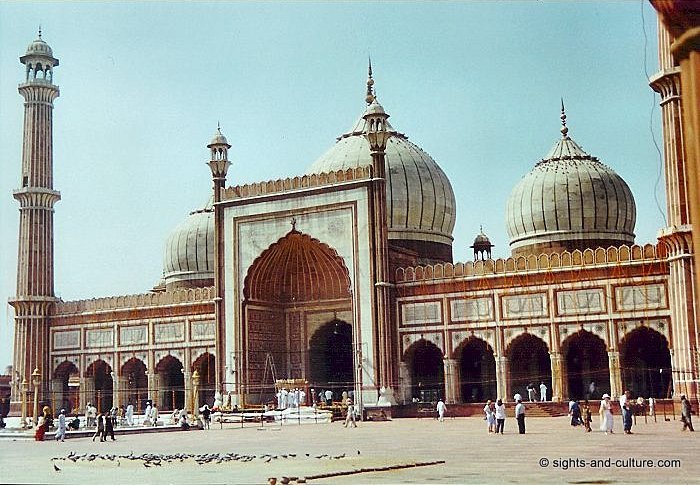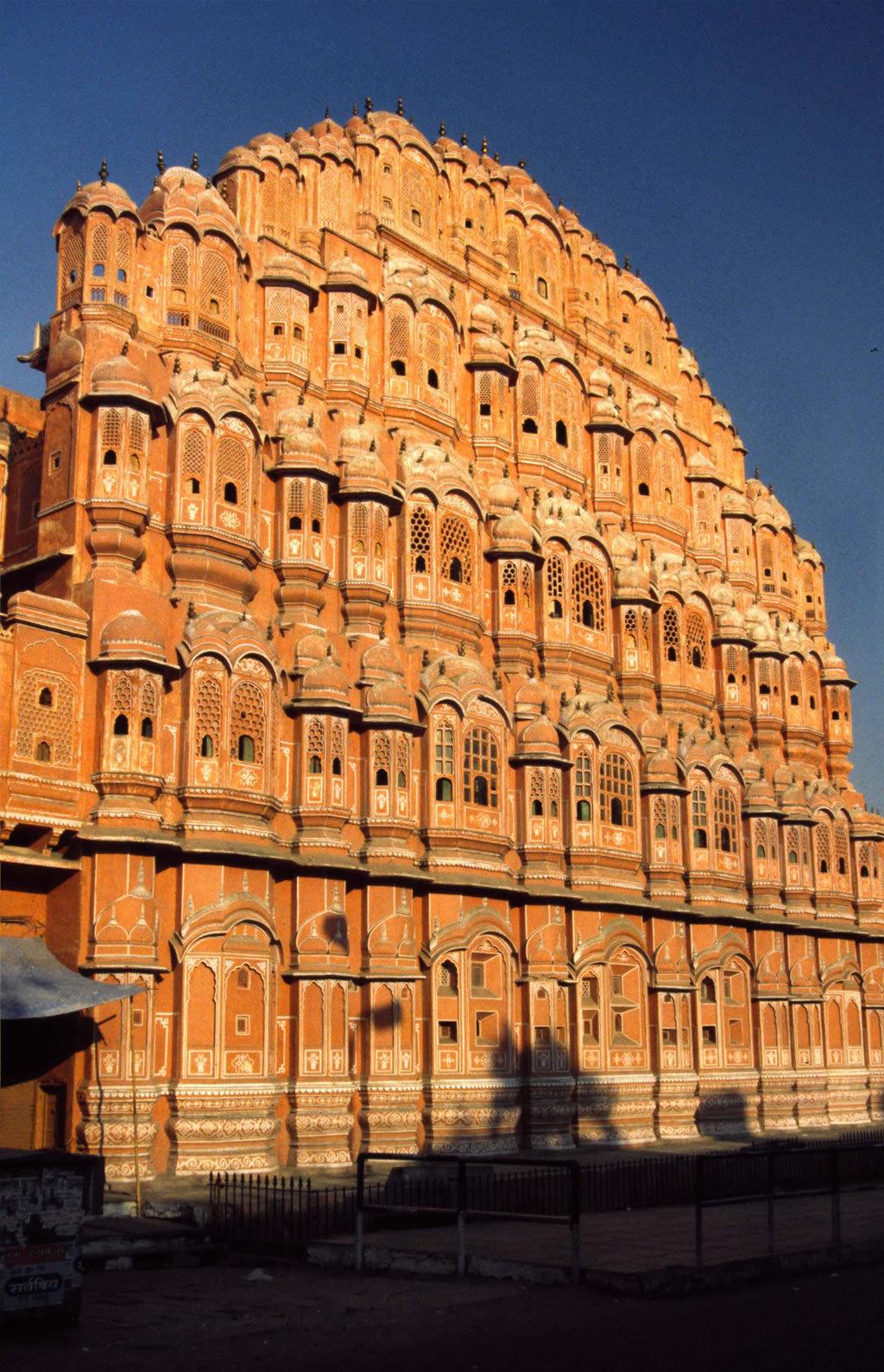
In India, the sights to visit are endless. Some of artistic and cultural, religious and meditation centers, national parks or protected beaches and mountain sports and leisure facilities. In any case I recommend that travelers do not try to see if it has too many places recently. It is more interesting to visit places few calm before a trip superficial.
Art, culture and nature:
India is sufficiently old, large and varied as to require considerable time if you want to learn their art, culture and landscape with a certain depth. Although from the outside can have a monolithic culture India, regions, its people, its culture, its landscape, its attractions and customs become highly differentiated from each other. List everything that is worth visiting in India would require a volume of data to write a small encyclopedia. However I offer a summary of the most essential, sometimes the most topical, but not less interesting.

Visit Delhi in India
Delhi:
The capital, Delhi, with their areas of New and Old Delhi has many places to visit or just to stroll the bazaars of the old town. As in other parts of the world, the legacy of religious architecture has a special attraction. The tomb of Humayun is a splendid example of early Mughal architecture.
It is the only building constructed by a wife in memory of her husband, in this case, the second emperor of the Mughal dynasty. If you want to have a good overview of the artistic tradition is indispensable India visit the National Museum of India where you can see interesting old pieces carved in stone, some from Harappa, as in cast iron, especially in painting and a fabulous collection miniatures from various periods. Other museums of interest are Modern Art and the Railroad.
At the heart of the new city walk through Connaught Place, which reproduces the square structure of Picadilly Circus in London, where you'll find all kinds of shops and restaurants. Thence leaving Janpath Road which is one of the main streets of the city, by which some of the most useful directions for tourists and around which you can find lively markets clothing and crafts.
Old Delhi is the ancient walled city of the seventeenth century, with its maze of alleys and bazaars.
There you can visit the Jama Masjid, the largest mosque in India built in the seventeenth century by Shah Jahan, builder of the Taj Mahal also. Nearby is the historic Red Fort, a fort of red sandstone interior chambers full of marble carving. Also worth visiting the Qutab Minar minaret, the thirteenth century, in sandstone and marble, and its proximity to the Iron Column 1600 years old, whose special alloy that has succeeded despite being immune to the elements to rust.

The nearby mosque Quwwat-ul-lslam is the oldest in India. Another point to visit the Jantar Mantar near Connaught Place, a magnificent astronomical observatory with masonry instruments, built by King Jai Singh, an engineer, mathematician and astronomer.

Rajasthan:
The tourist region par excellence is that of Rajasthan, which is the most refined craftsmanship of India.
Their strengths, palaces and temples, their attractive culture, its people, its colors, help make Rajasthan one of the most interesting areas of India. The capital is Jaipur, known as the "Pink City" because of the color of its buildings, palaces and fortresses.

The most notable of his palaces for its facade is the Hawa Mahal or Wind Palace, situated in the heart of the city. Nearly surrounded by a park populated by peacocks is the Jantar Mantar, the Royal Observatory, 250 years old, with its monumental astronomical instruments made in masonry.
On the outskirts of Jaipur stands the Amber Fort, the Fort Jaigarh, ancient fortified citadel whose interior houses a sumptuous palace in marble. From the base of the walls, you can climb inside the fort in "elephant-taxi." Another city to visit is Udaipur, a city of lakes, palaces, gardens and fountains. There, in the middle of Lake Pichola, the palace stands Nivas, Lake Palace Hotel is now, that was the scene in a James Bond movie.

The road from Udaipur to the Thar desert is strewn with temples of the Jain Ranakhpur, profusely carved buildings arising in the middle of the plains. To the west is Mount Abu, Jain DILW with several temples, a thousand years old, carved in marble and carvings. To the north lies the Thar Desert, with its ocher sands is one of the largest in the world.
As the desert is the city of Jodhpur, crowned by an impressive fortress walls and into the desert was Jaisalmer, lonely city of great architecture. Further north is another city Bikaner desert fortress and strangely beautiful. And midway between Jaipur and Pushkar desert is a beautiful village near Ajmer, where the annual spectacular camel market.
From the land of the Kama Sutra it is expected to find ancient erotic sculptures. The eroticism in ancient Indian sculptures is legendary. The sculptures on the walls of the temples at Khajarao are just such an example. This set of about twenty temples is said to have been built during the reign of the kings of the Chandela dynasty during the 9th and 10th centuries AD. The UNESCO has declared these temples a world heritage site.
The artists have used the “Mithunas” or couples to depict all forms of colorful sexual imagery. That is not to say that only sculptures of couples adorn these temples. There are also groups involved in the art of making love. The sculptures show many positions which can be used by lovers. Some have been admired and others have been criticized, but everyone has had something to say about the statues. It is like visiting a visual guide of the Kama Sutra.
You may ask why a temple, a place of worshiping the lord is adorned with these graphic sexual images. There are many schools of thought here. For one set the answer lies in the fact that a person was supposed to overcome all desires in order to be near the lord and gain salvation. Of all the desires, it is the sexual ones that are the most basic and instinctive. So the sculptures were set as a test of self control. If the devotee could keep his mind on his prayers despite being surrounded by these erotic art forms he was indeed in control of his emotions.
For the second set there was a spiritual meaning behind every erotic sculpture. If a man and woman were in sexual embrace, it also signified the meeting of their souls as one in the eyes of the lord. So each sculpture can be interpreted in a deeply spiritual manner as well as in an erotic manner. It was also believed that man and woman could increase the fertility by visiting these temples.
For yet another school of thought more in touch with the Indus Valley civilization, the erotic sculptures exemplified one of the four stages in man’s life. When a man was in the householder stage the desire for “Kama” was natural and part of living. This is reflected in the erotic statues of Khajarao.
No matter why these sculptures were commissioned by the Chandela kings, the fact remains that they are in existence today. A very interesting take on ancient porn set in stone for immortality. These sculptures can provide insights into the ancient love making techniques that were prevalent in India long ago. These erotic statues are worth visiting if you can. So when you plan your trip to India, put Khajarao on the itinerary.
Staggering facts
- The room of candles is a magical cave in eastern Italy. It gets its name from the white spikes of rock that grow up from the floor of the cave, like candles.
- The green house effect is the name scientists have given to a hot problem. Waste gases from factories power stations and cards are building up in the atmosphere and strapping too much heat close to the earth. Our planet is slowly getting warmer like a greenhouse in summer.
- The coldest place in the world is Vostok station in Antarctica. The temperature here is usually about – 58 cilices degree, but it has dropped to -89 cilices –the coldest ever known.
- In Hawaii there is mountain called Mauna Kea, which is more than 1300 meters higher than Mount Everest. But most of it is under the sea.
- There are volcanoes in space. The volcano Olympus Mons on the planet Mars is three times higher than earth’s Mount Everest.
- The people of ancient China believed that they r=earth was balanced on the shoulders of giant ox. Earthquakes happened when the ox shifted the earth from one shoulder to the other.
- In the Dead Sea, you can float while reading the paper. This is because the water is unusually salty and supports your weight.
- People of Mexico celebrate the day of the dead. It is celebrated every year on November 2. The day of the dead is also called all souls’ day. People remember their dead friends and relatives, taking flowers and candles to their graves and having picnics there.
Fact file
*The world’s shortest river is the D river in the USA. It is just meters!
*In the USA, in 1931, a tornado lifted a train into the air and dumped it in a ditch.
Himachal: The place of gods and godesses
Himachal is a hilly state of India in North. The state is famous for its natural beauty of hills, water bodies and greenery. There are twelve districts in Himachal Pradesh, namely
- Kangra
- Kullu
- Una
- Kinnaur
- Lahaul & Spiti
- Bilaspur
- Hamirpur
- Shimla
- Sirmaur
- Mandi
- Solan
- Chamba

Himachal is such a lovely state to visit and enjoy the natural beauty. Now these days an institue of naturopathy is also working at Palampur (Kangra) where people go for various kinds of natural and ayurvedic therapies. In Manali (Kullu) white water rafting, paragliding etc. can also be enjoyed along with other activities.Actually there are so many spots but it is difficult to accomodate each of those in a single article. Overall a very nice state to visit and relax.
More Articles …
Page 21 of 22